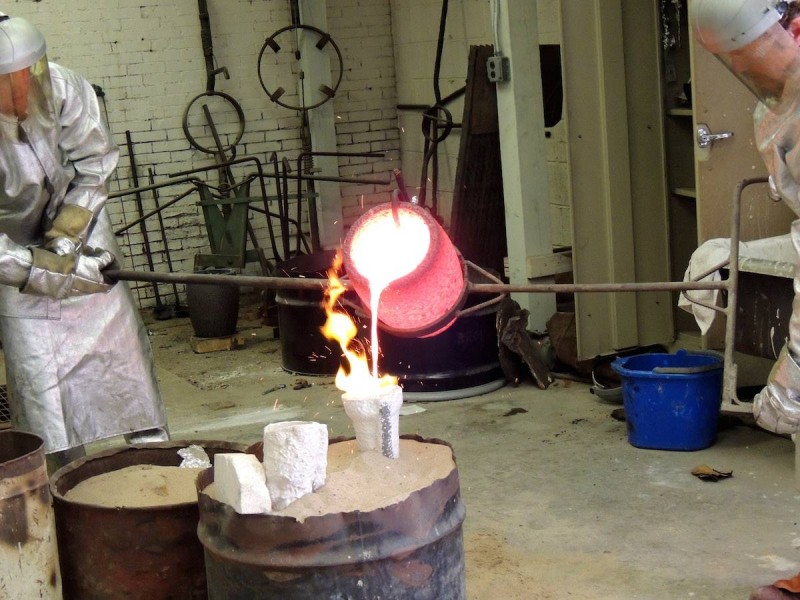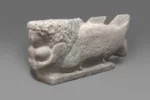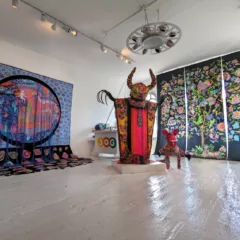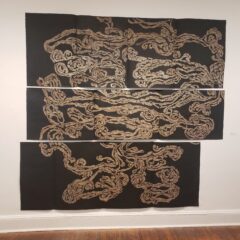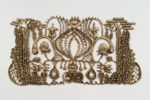Tyler Kline is both metaphysical in his thinking and materials-focused in his making. The two go very well together in works whose subject deals with time going forward and back and realms from the primordial to the digital. I’ve followed this artist’s works for years, and seen his materials change from aluminum (tin foil), string, paper, glitter, feathers, hair and found matter, to found matter, welded rebar, painted wood and bronze. All the while, the subject remains the human connection to the earth, sky, each other and matter.
Materials matter but so does time and space and place
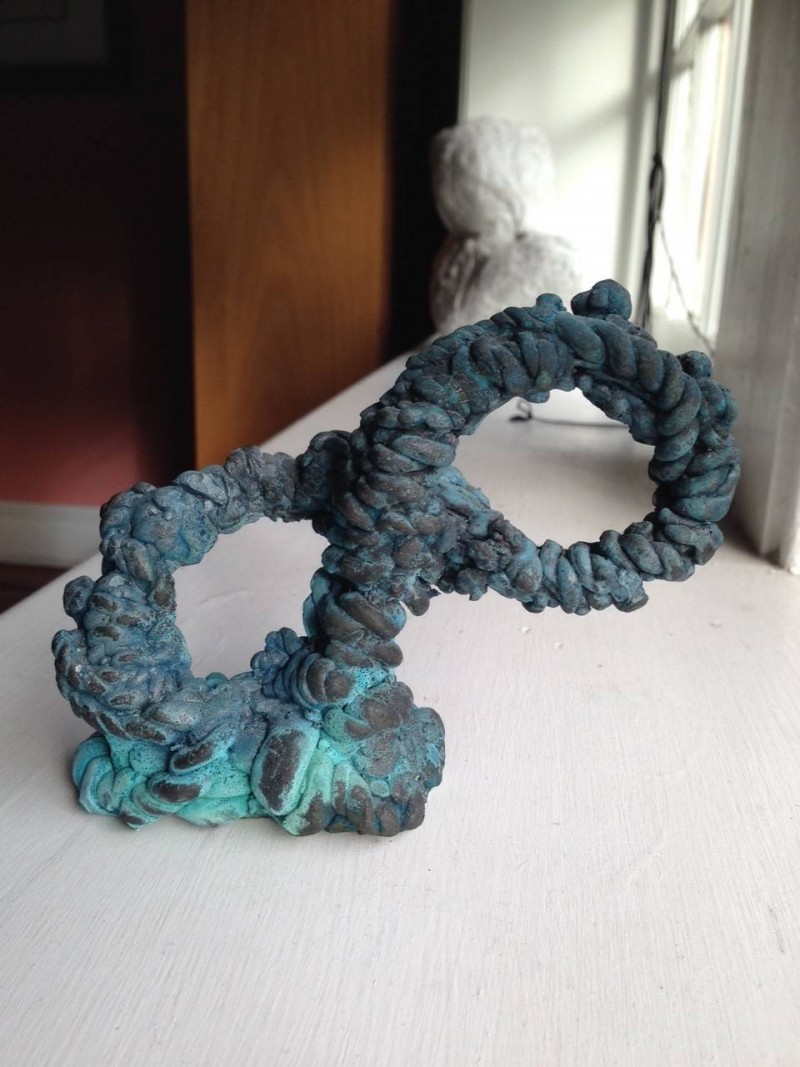
Tyler is a long-time skateboarder, and his show at UArts, called Upon the Shore of the Infinite Static, coincided with the release of his first skateboard design for Slapstik Skateboards. Here’s a link: http://slapstikskateboardart.bigcartel.com/product/tyler-kline-upon-the-shore-of-infinite-static-deck
This was Tyler’s first skateboard graphic. He explained the thread that connects it all together:
…the thread that connects all the work is the interest in the unexpected distortions inherent in the transfer of media and conception, the magic that takes place between thought and expression. For the past half decade I have been obsessed with how the geometric algorithms form the digital world, encroaching into every aspect of our visceral life. Aesthetically I look at each of these separate media as a way of answering the question of what the digital mediated world is doing to us and how it is filter through our own subjective central nervous systems.
Bronze with delicacy
Tyler has been working with bronze for a while now. He has done wax casting but he is now pouring bronze right into sand molds with remarkable lacey results.
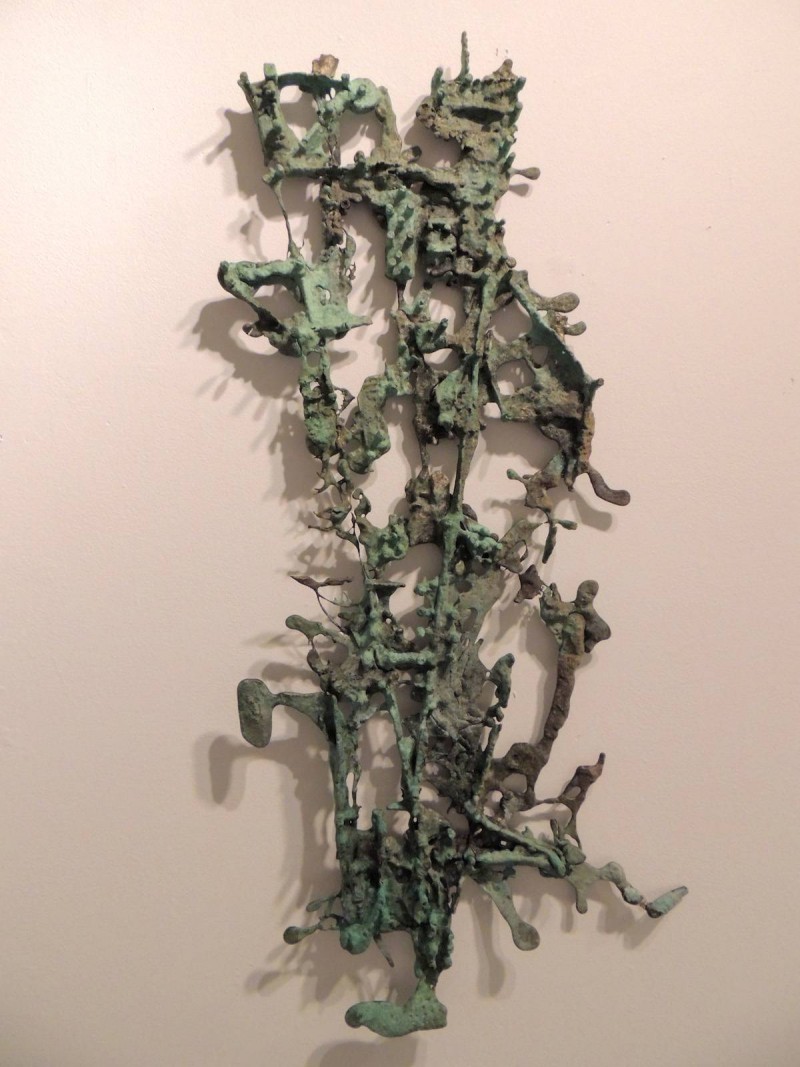
But Tyler is not only an Iron (or Bronze) guy, he is digitally savvy and shares trippy stop motion videos from his wood cut works, which he shares on his Twitter and Vine feeds – https://vine.co/v/eX2PB33vuhp.
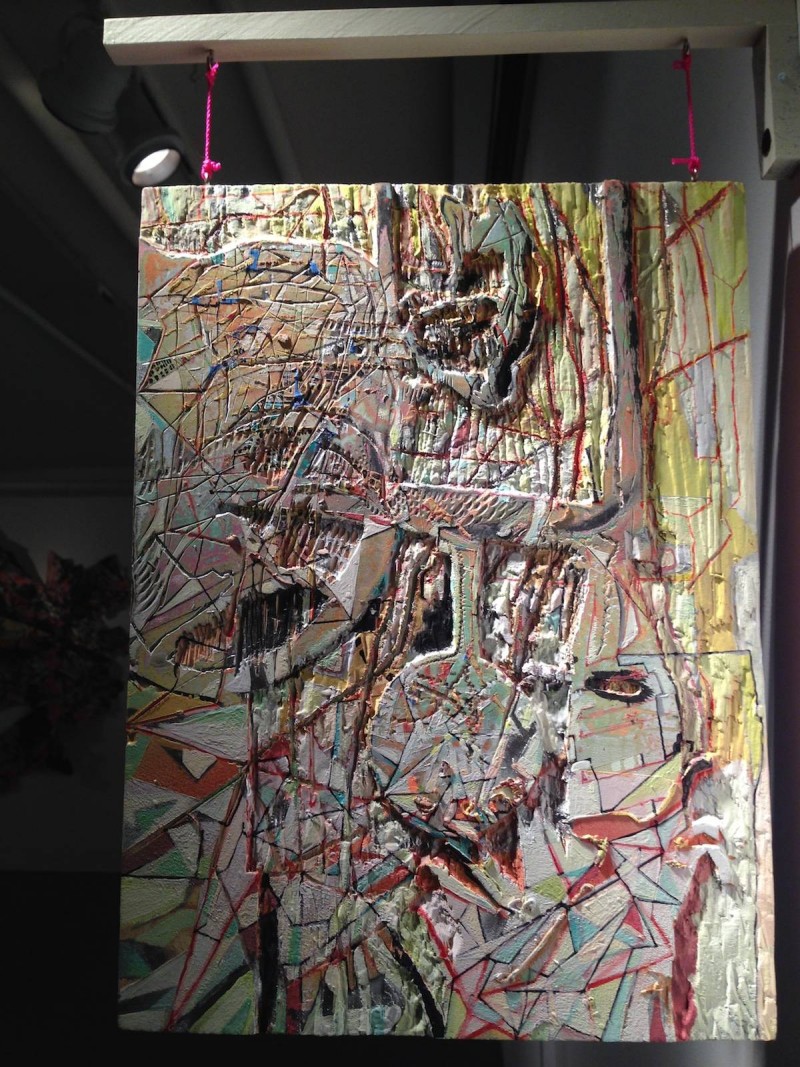
When I saw his recent exhibit at UArts, we talked about his new poured-into-sand works, one of which, “Uqbar,” was in the show. I was struck by its delicacy and map-like qualities. The other works in the show that interested me are the double-sided wood cut paintings which appear in Tyler’s Twitter feed occasionally as stop-action videos. The pieces are also map-like, and something about their utopian/dystopian qualities reminds me of the utopian architecture of Lebbeus Woods.
August 13, 2015 – Tyler emails an explanation about using bronze in 2015
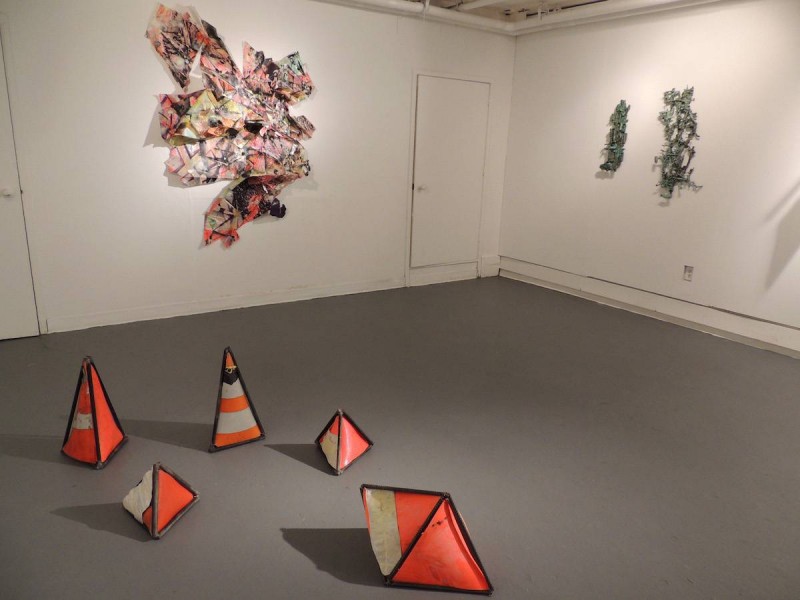
Continuing with our dialog regarding cast bronze’s place in post-internet new millennial aesthetics; a question I often ask myself, especially when engaging with a media that carries a heavy and specific weight, is, whether the weight is literal, historical, or conceptual; and what can this material speak to our peculiar 21st century predicament?
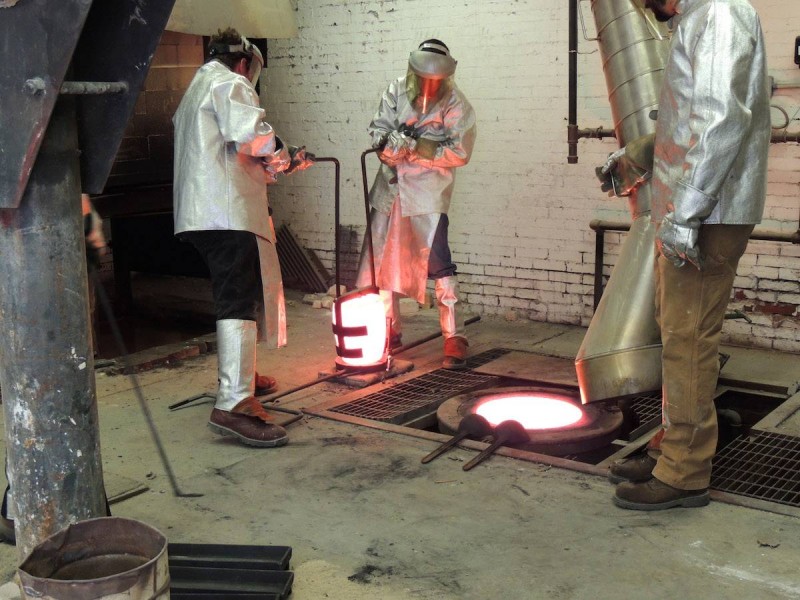
Bronze is encumbered with a vast culture that could take lifetimes to unpack, so I choose characteristics that resonate with my narrative, particularly the material’s cross cultural relationship with alchemy, ceremony, and the material arts.
All three of these characteristics continue to move from the margins toward the center and back to the fringes again in the early 21st century, a type of undulating dance ushered in by the post-Sept 11th surveillance state, non-ending wars fought by the global disenfranchised for the global power elite, and the desire to transform oneself into anything other than those of the entrenched guard who have stacked the playing field in a way inaccessible to most.
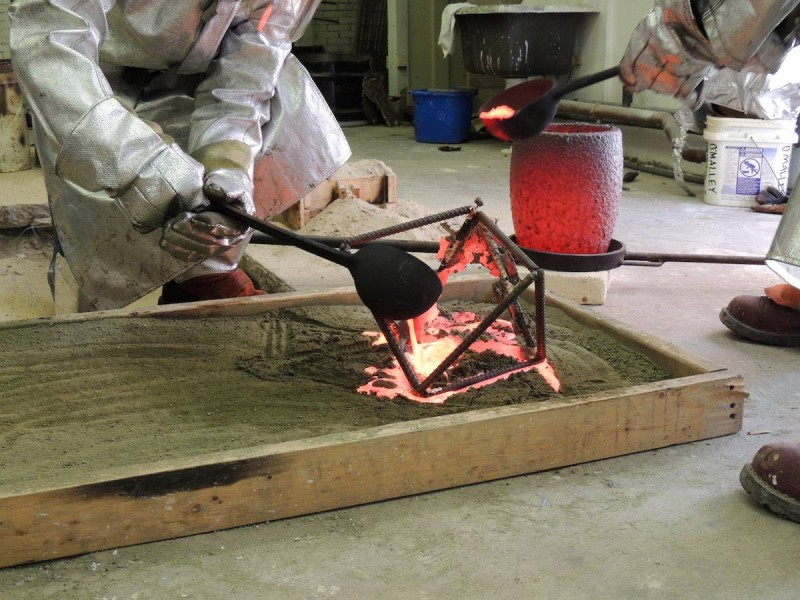
The alchemy of turning a base material (wax) into a precious material (bronze) is a quest that reaches back millennia, and in my eyes has bizarre parallels with the yearning for transformation expressed by the gender fluid.
The ceremonial objects historically created in the foundry (bowls, chalices, urns) were meant to be passed down and solidify bonds of lineage. This ideology is in diametric opposition to our disposable culture filled with personal electronics programmed with a planned obsolesce.
Furthermore, bronze’s use in the material arts: weaponry, armor, etc. — to such an extent that a cultural epoch was coined “The Bronze Age” — draws parallels with the Military Industrial Complex’s hegemetric dominance of modern culture, seen and unseen. After all, the fiber optic infrastructure that created the Internet was a military engineering campaign to keep lines of communication open in the event of a thermo-nuclear war.
These are all conceptual concerns that do not touch on my overlapping concerns with craft, technique and experimentation.
These are some initial thoughts on why I am focusing on this particular medium and on its continued conceptual relevance. Let me know what areas you would like me to expand or clarify.
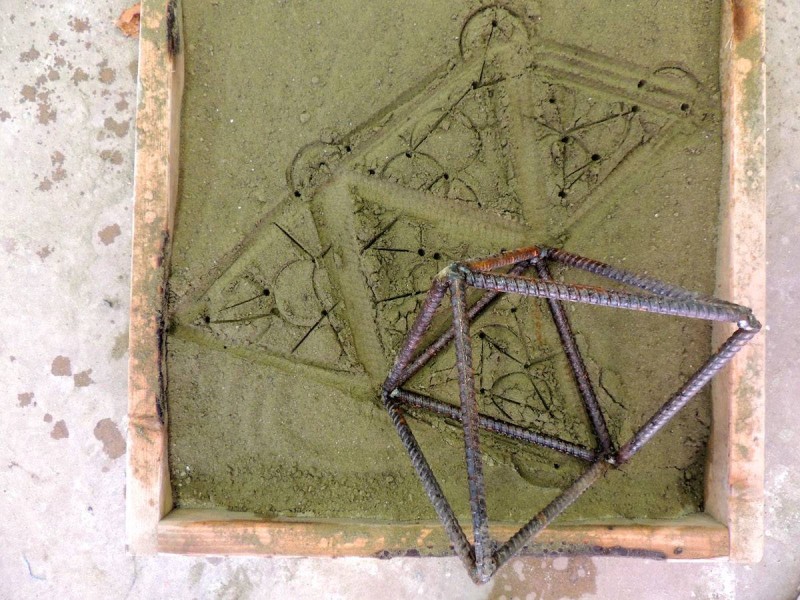
August 14, 2015 – Tyler emails about the bronze pour into sand
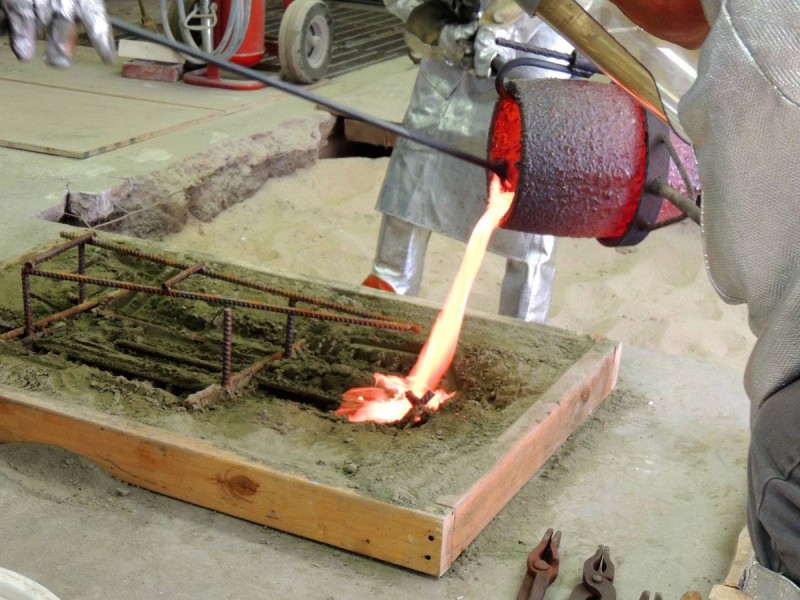
The bronze pour went well today, attached are pictures. Aesthetically, various geometric processes(polyhedrons, platonic solids) that are utilized by new media(digital printing, 3d mapping etc…) are brought into my work in a way that creates bizarre juxtapositions with the ancient and hands on reality of a bronze pour. I also am interested in including nods to modernist architecture (Mario Chiattone, Antoni Gaudi‘) as well as to phenomenological artists like Carsten Holler and Olafur Eliasson) however the relational aesthetics are in the collaborative process, not so much the final object. However, scaling up so the bronze poured was no longer in relationship to the viewer as an object but as architecture would be one way of transferring phenomenology into the end result.
